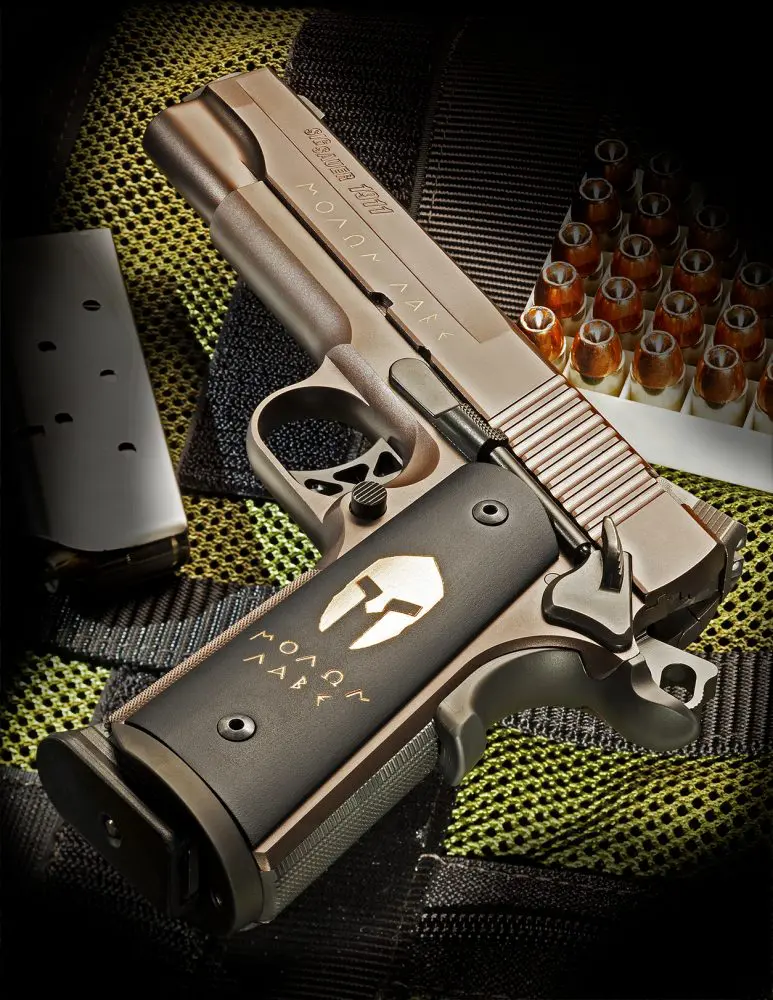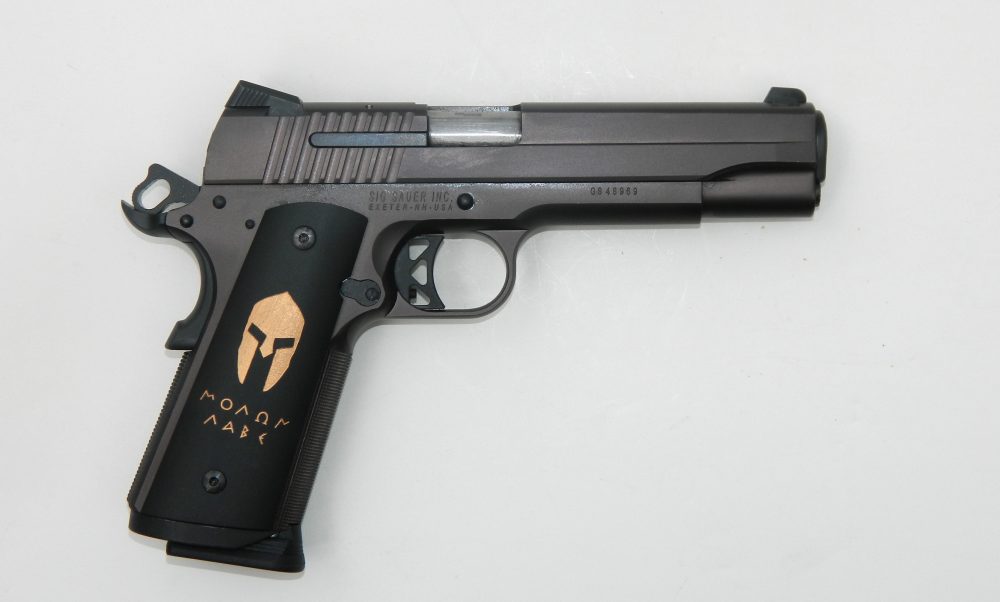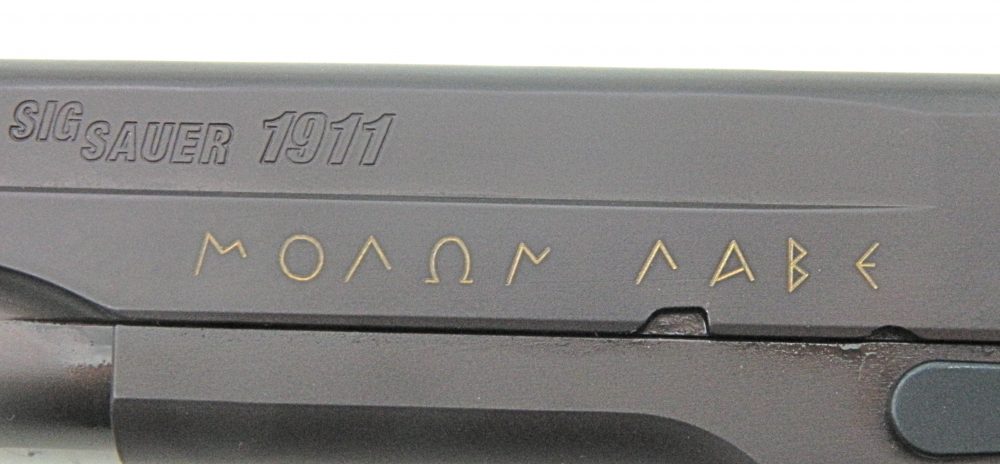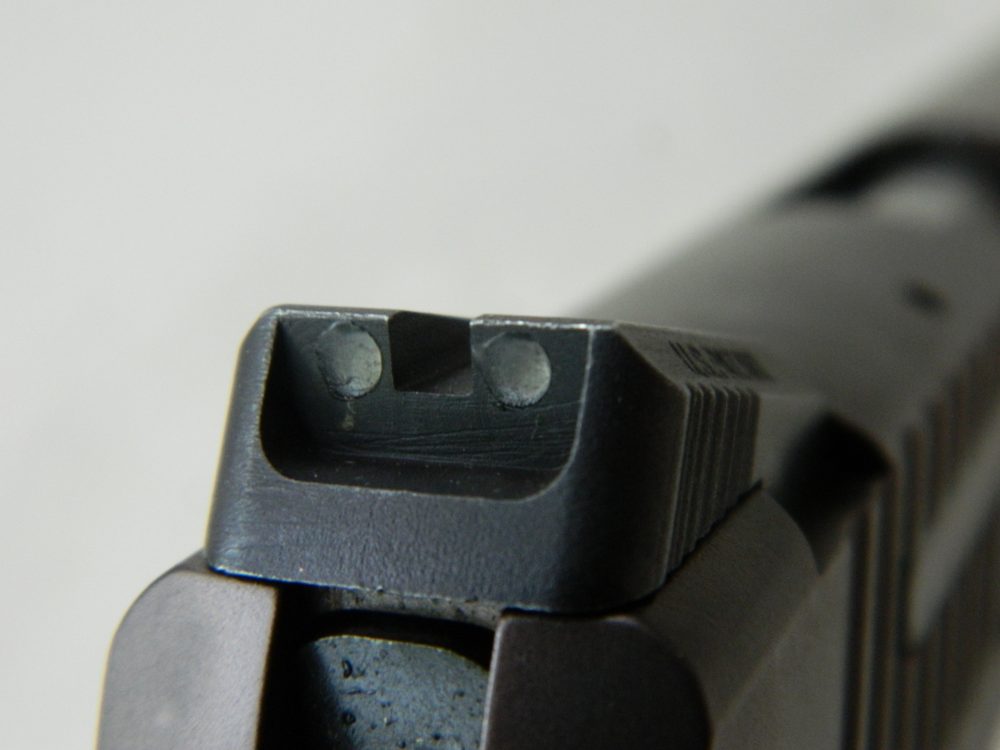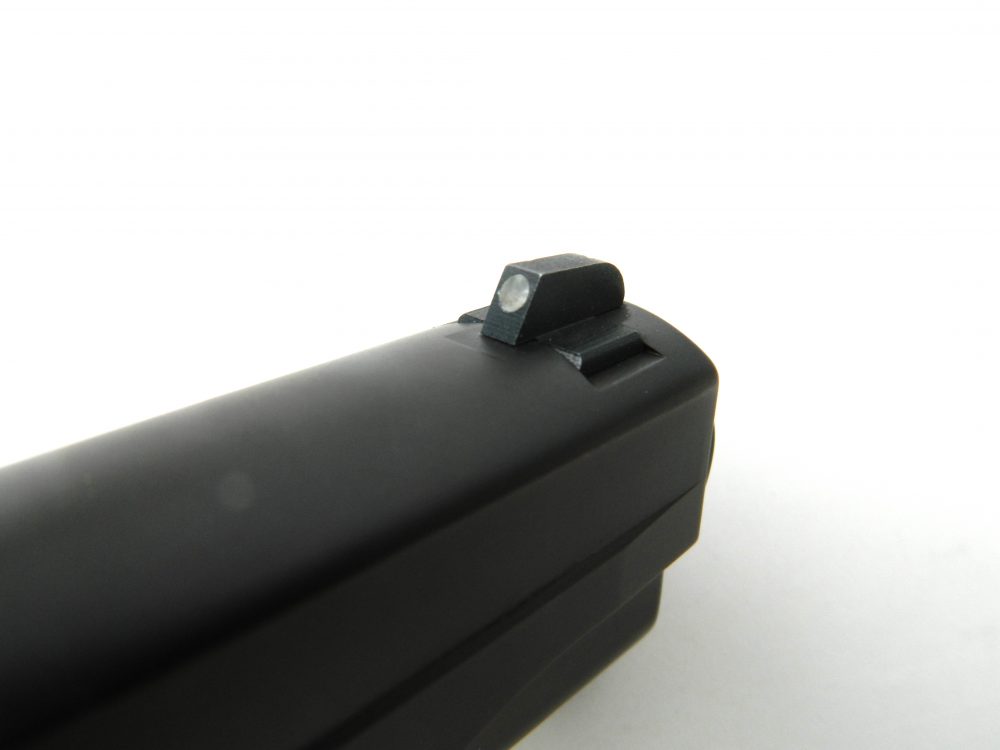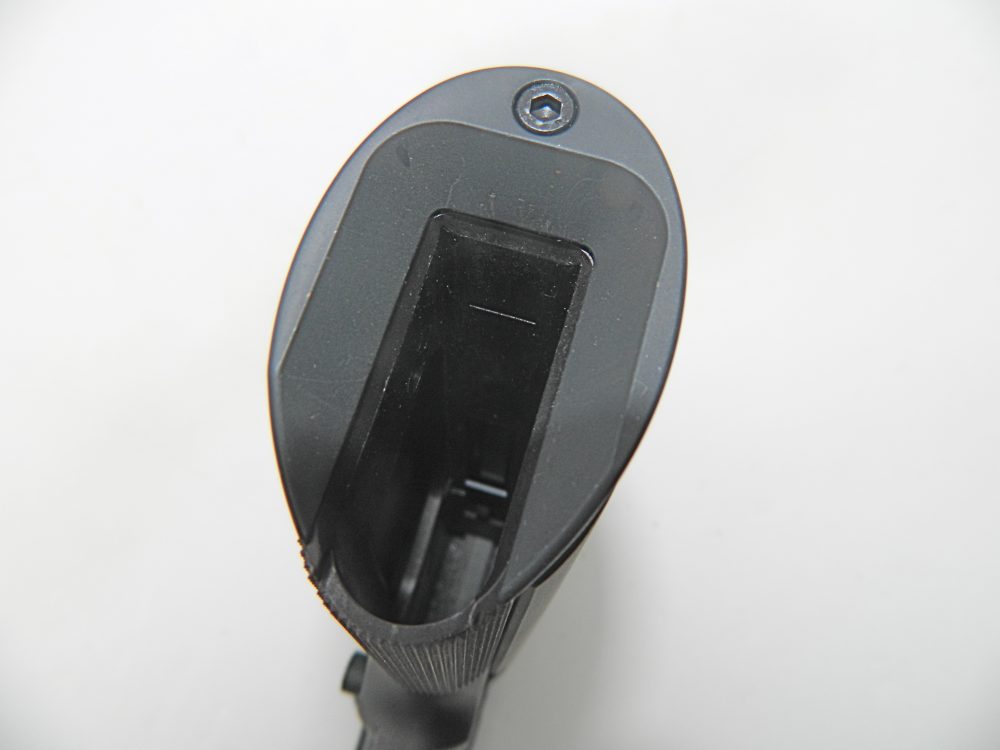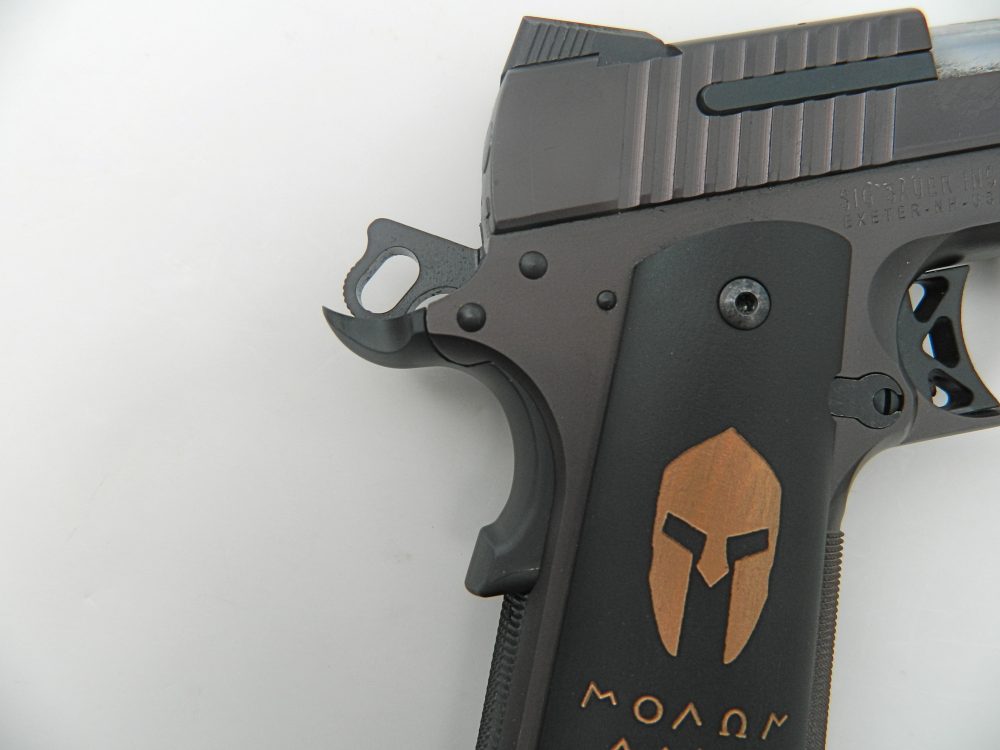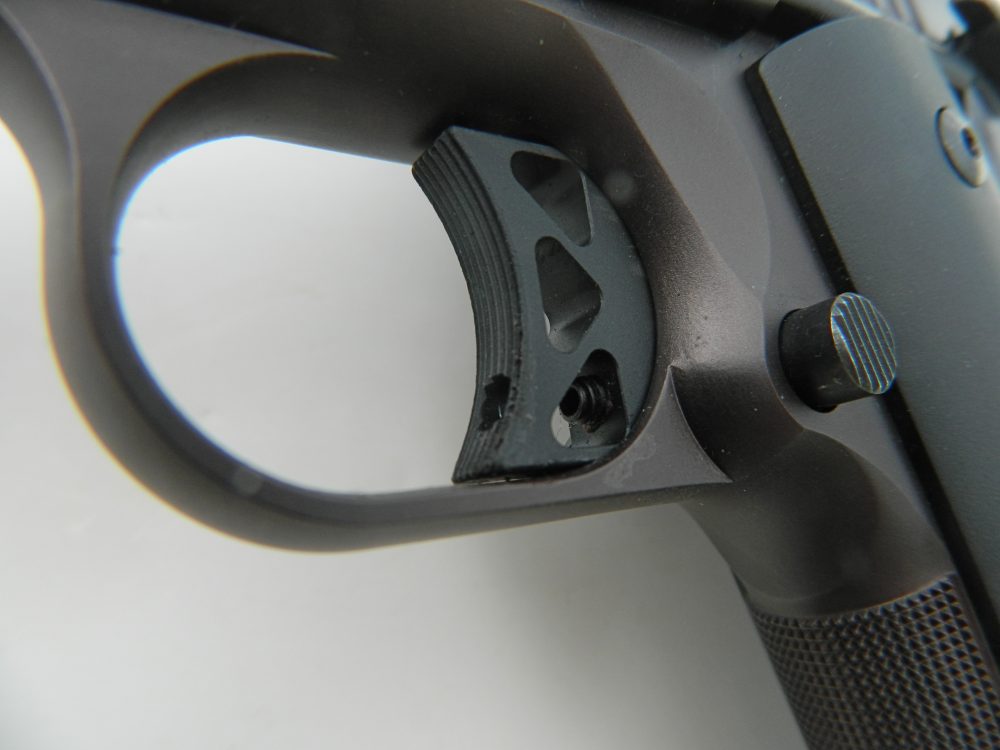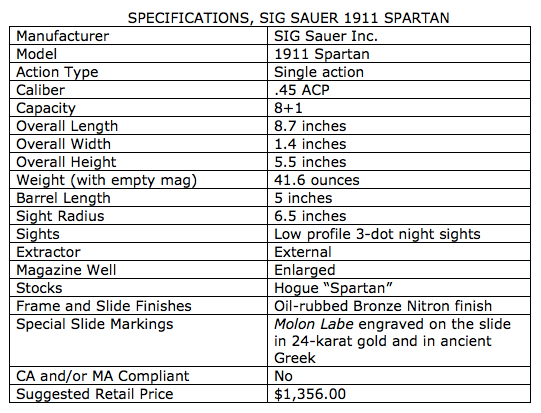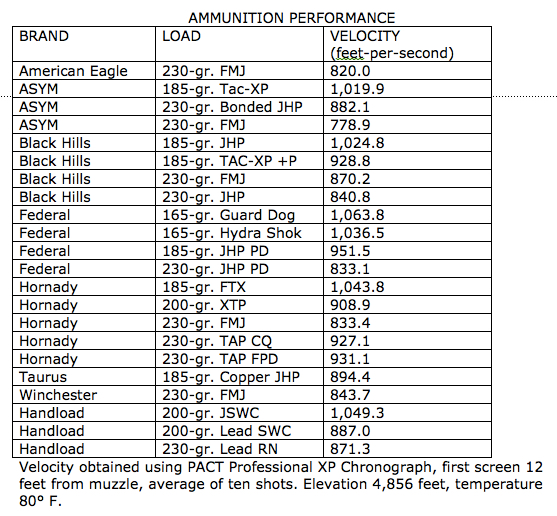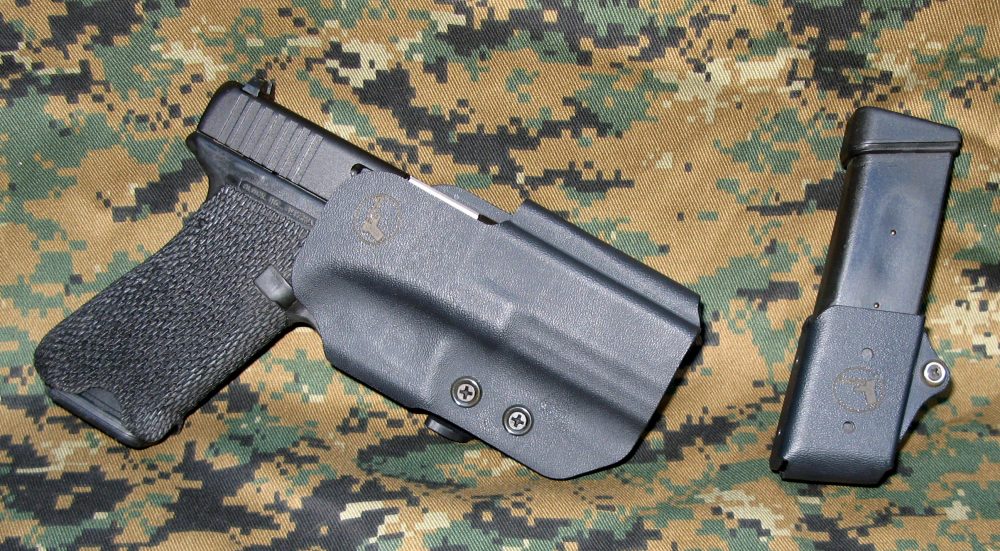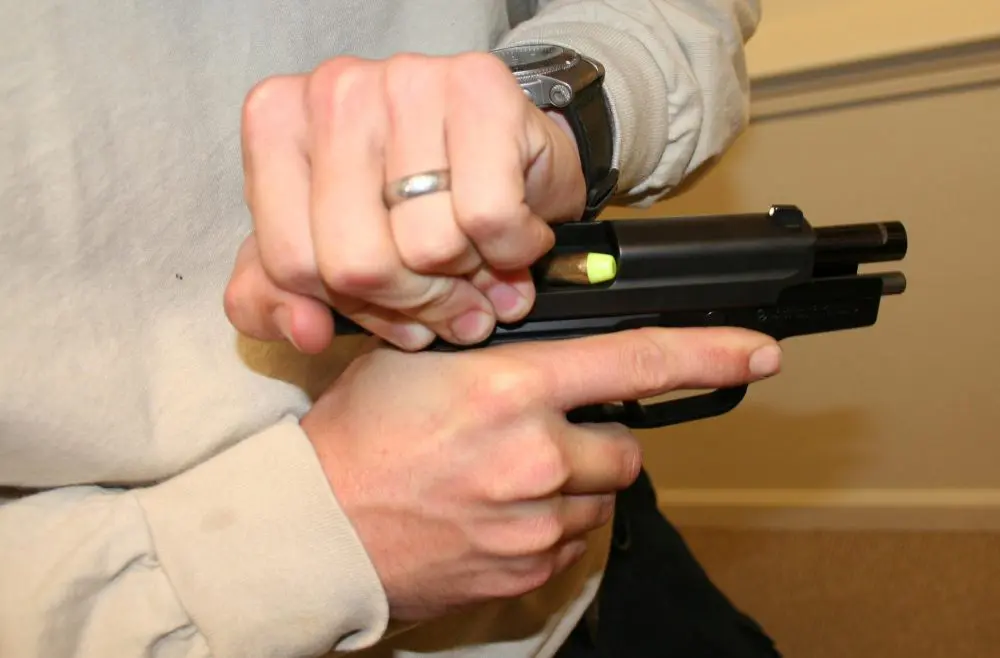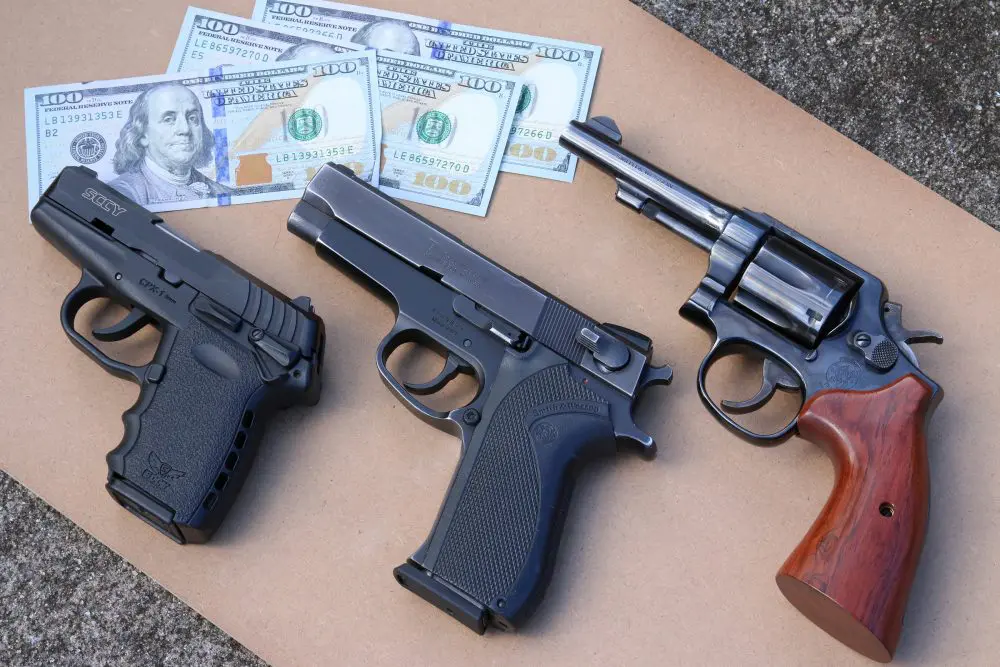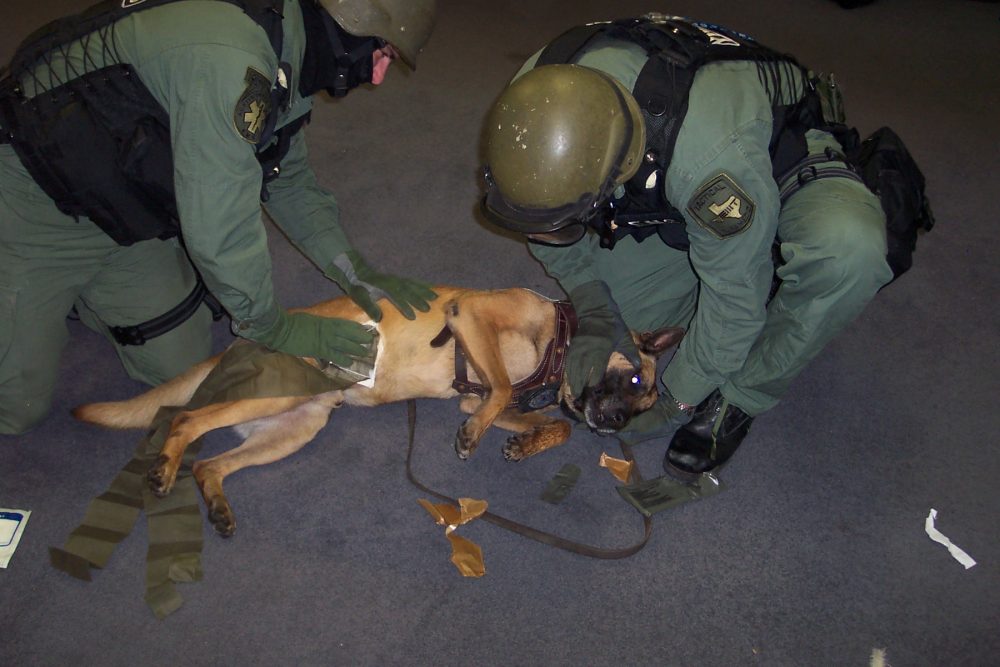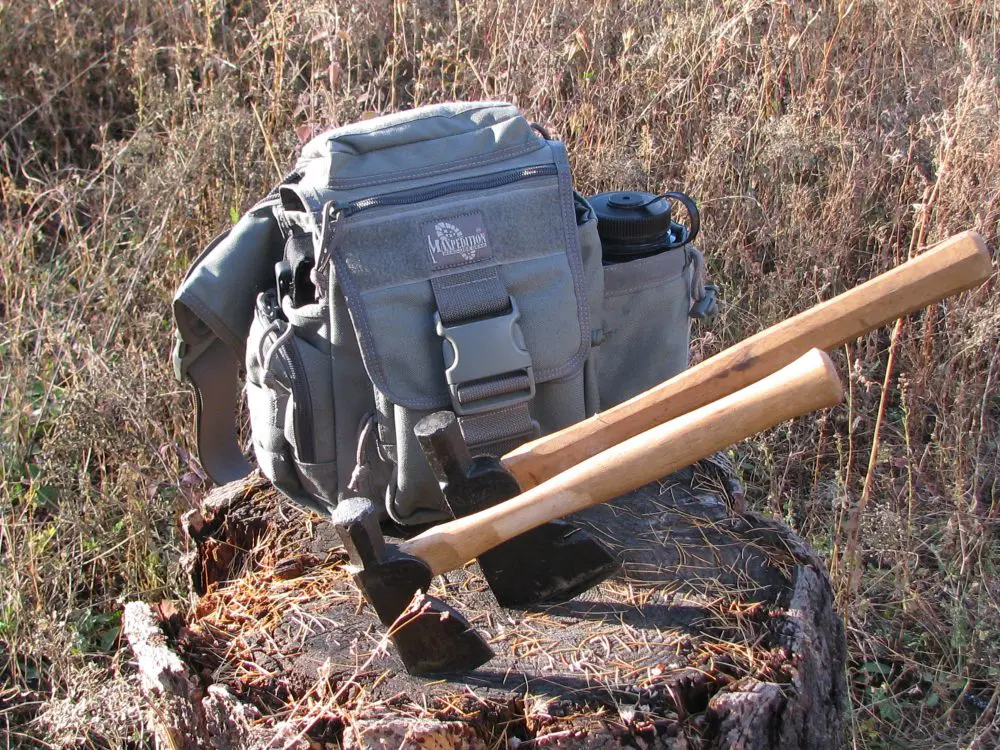Right side of SIG Sauer Spartan 1911.
In 480 B.C., the forces of the Persian Empire under King Xerxes numbered—according to the ancient Greek historian Herodotus—two million men. The Persian army bridged the Hellespont and marched to invade Greece.
King Leonidas of Sparta and 300 handpicked Spartan warriors—along with Hoplites from another Greek city-state—marched to meet Xerxes at the narrow mountain gap along the coast at Thermopylae. The gap along the coast was a mere 60 feet wide and was the best location for a blocking action.
The main weapon used by Spartan warriors was the dory—a seven- to nine-foot spear. This was backed up with the xiphos—a short sword only about 18 inches long. Finally, the aspis (or hoplon) was primarily used for defense. But this shield—weighing around 30 pounds, made of wood and often covered with a thin sheet of bronze—was sometimes used as a weapon in its own right to bash enemies to death.
Engraved in 24-karat gold and in ancient Greek are the immortal words Molon Labe.
Xerxes sent a message to the Spartans that resistance was futile and for them to lay down their arms. Leonidas responded with two words: “Molon Labe” or “Come And Get Them.”
After days of fighting—and killing an untold number of Persians—the Greeks were betrayed by one of their own, who showed the Persians a secret pass that would take them behind the narrow gap. King Leonidas, his Spartans, and their allies died to the last man.
In the last decade or so, those two words spoken by Leonidas have become the rallying cry of law-abiding gun owners against those who would take away our right to keep and bear arms.
This year SIG Sauer added a new pistol to their line of 1911s—the 1911 Spartan.
Sights are three-dot night sights.Molon Labe.
Table of Contents
FEATURES
While the 1911 Spartan has the same general specifications as most full-size pistols of its type, what makes the Spartan special is the custom treatment SIG has put into it.
Unlike the common blue or stainless pistol, the Spartan’s frame and slide are finished with an oil-rubbed bronze Nitron finish, which is very appropriate because the Spartans preferred bronze for their armor and some of their weapons.
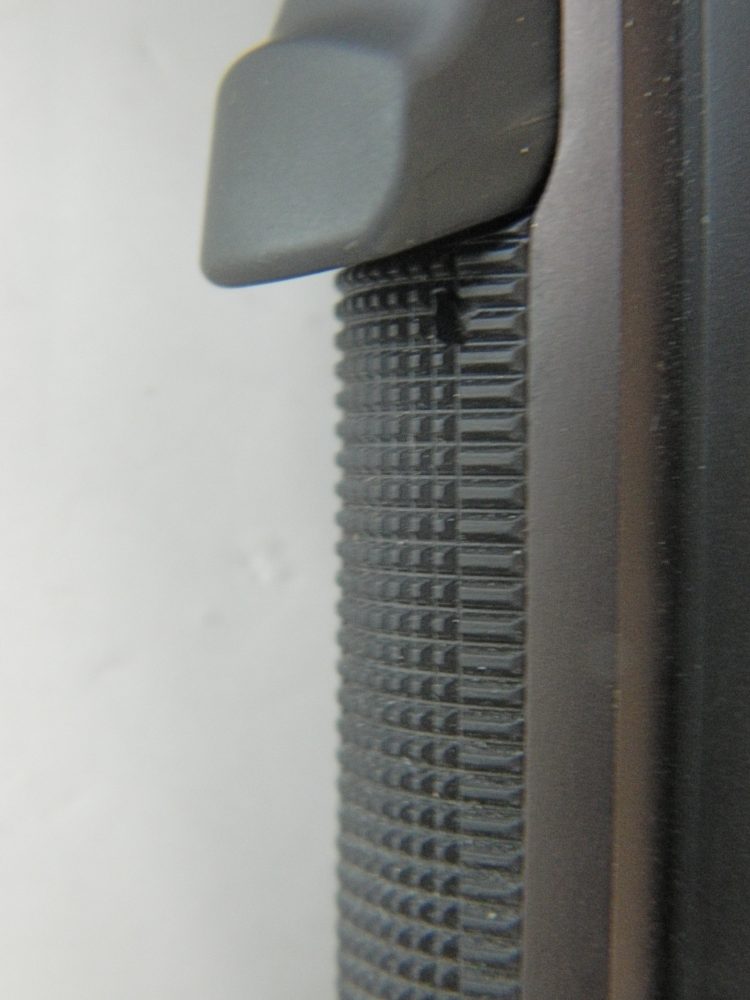
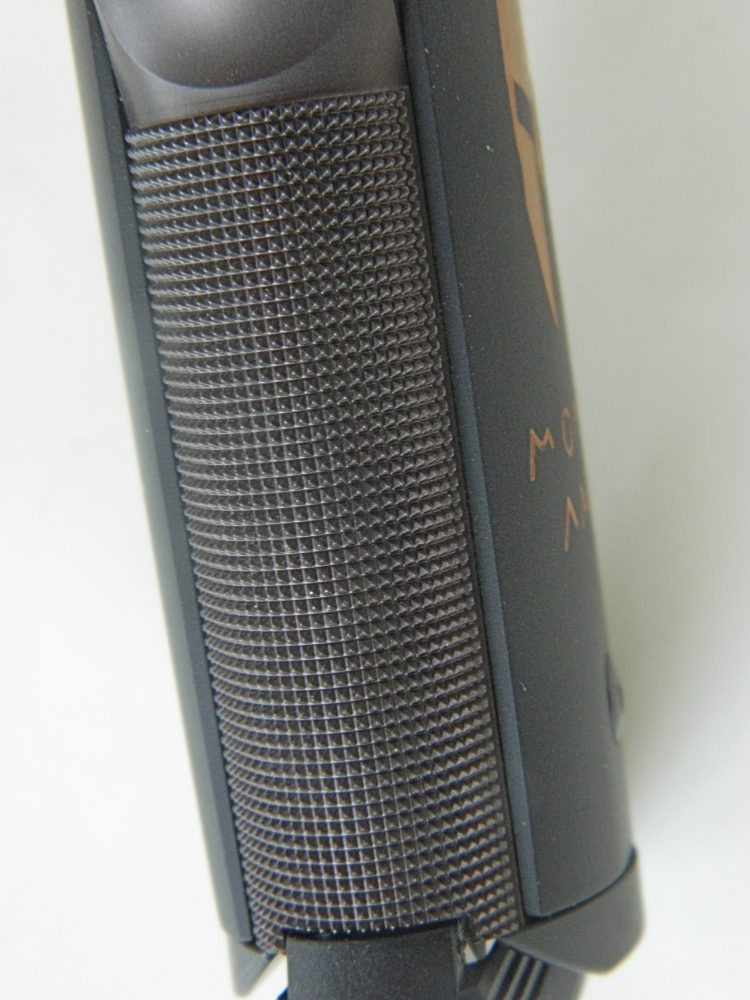
Both sides of the slide—about 3/8 of an inch from the top of the slide have been slightly machined away, giving the slide a unique appearance. The muzzle end of the slide ends in a slight taper.
Further setting off the left side of the slide are the immortal words Molon Labe, written in ancient Greek and engraved in 24-karat gold.
I’m admittedly somewhat of a purist and normally prefer the internal extractor as designed by Browning, but to be honest I have not experienced any problem with external extractors as found on SIG 1911 pistols and some other brands.
The face of the skeletonized trigger is serrated.
Stocks used are Hogue Spartan Grips. The black stocks are set off with the frontal view of a gold–colored Spartan helmet, under which are the words Molon Labe—again in gold and written in Greek.
There are large grasping serrations on the rear of the slide. Sights are low-profile three-dot night sights.
SIG has performed a superb job of fitting the Spartan, as is easily seen by the seamless fitting of the beavertail grip safety. The bottom of the grip safety features a “speed bump” to ensure it is depressed fully by even the smallest hands.
For a good grip while firing, both the front and back straps have 30 lines-per-inch (lpi) checkering.
The top of the thumb safety is serrated, as is the magazine release, while the top of the slide lock has 20-lpi checkering.
There are virtually no sharp edges on the Spartan to abrade skin or clothing—with the exception of one, which I will touch on later.
One eight-round stainless steel magazine is included with the pistol. The mag has numbered witness holes and a polymer baseplate. The removable baseplate is held in place with a spring-loaded detent to facilitate ease of cleaning.
Also included with the pistol are a fitted padded hard case, tube of TW25 Gun Crease, padlock and manual.
Front sight is installed in dovetail, allowing sights of different heights.
RANGE EVALUATION
For the evaluation, 19 .45 ACP loads were assembled from seven different manufacturers and three handloads, for a total of 22 different loadings. These loads ranged in weight from 165 grains to 230 grains and included deeply seated semiwadcutter to full-profile full metal jacket and hollow points.
The Spartan had a typically good 1911-type trigger that broke cleanly at around five pounds.
Velocity Testing
I began the evaluation by checking the velocity and accuracy of the above-mentioned 22 loads. Because I fire a minimum of ten rounds over the screens of my PACT Professional XP Chronograph to establish a meaningful average velocity, I used Chip McCormick Power 10 ten-round mags instead of the factory provided magazines to save time.
While the Spartan did not hiccup during the velocity testing, it was somewhat sluggish for the first 100 rounds or so. I attribute this to a wearing-in period of the Nitron finish on the rails of the slide and receiver. Predictably, the more the pistol was fired, the smoother it became. It was also during this period that I discovered the only sharp edge I could find on the Spartan—the outside edges of the trigger.
Enlarged magazine well is standard on the Spartan.
I shoot a 1911 with the pad of my trigger finger on the face of the trigger. After the first 100 rounds, I had developed a blister on the underside of my finger. With the day heating up and humidity increasing during the monsoon season, I pressed on so the environmental conditions would be as close as possible—and hence making the velocity readings as valid as possible—from the first shot to the last.
By the time the last of the 220 initial rounds had been fired, the blister had broken and, although hardly serious, it became increasingly difficult to concentrate on a good trigger press and follow through.
If I were to keep the Spartan, I would take off the edge with fine grit sandpaper.
With velocity testing out of the way, I applied some moleskin to the open sore and proceeded to see what the Spartan was capable of in terms of accuracy.
Superb fitting is evident by seamless fit of beavertail grip safety. Grip safety features “speed bump” to ensure it is depressed fully by even the smallest hands.
Accuracy Testing
I used a variety of magazines, including the mag that came with the pistol, Kimber Tac-Mags, Chip McCormick Power Mags, and reconditioned GI mags.
Since S.W.A.T. readers are more interested in the practical use of weaponry as it relates to defense, I don’t shoot off a bench with anything other than a rifle.
Accuracy is relative, and the groups I shoot standing on my hind paws may be better or worse than someone else’s. However, every load assembled was able to group into six inches standing unsupported from 25 yards—this is easily minute-of-bad-guy. As expected, the lighter, faster loads shot higher than the heavier, slower ones.
To make sure the Spartan would be accurate enough if called upon, I did load several mags with random loads and fired them from the rollover prone position, again from 25 yards. I was not disappointed with 2 ½- to 3-inch groups that showed the Spartan was capable of making head shots if the shooter were left with no other option.
I concluded the evaluation with drills from the holster from contact distance—shooting from the retention position—to 15 yards. While shooting on the move, the checkered front and back straps allowed follow-up shots with a minimum of dwell time between shots.
All in all, I fired just over 600 rounds through the SIG Sauer Spartan 1911. Although as mentioned earlier, it was a bit sluggish the first 100 or so rounds, I did not experience a single malfunction regardless of bullet shape, overall length of the cartridge, or type of magazine used.
Face of skeletonized trigger is serrated.
LOOKING FOR TROUBLE?
When I showed the Spartan to family and friends, several made the comment that they would not want to carry it, out of fear that if involved in a shooting, a prosecutor would try to make the case that they were looking to get in a fight because of the inscription on the slide and stocks.
While something like this may occur in a location that is heavily anti-gun, I don’t believe it’s a big deal for several reasons.
First and foremost, I doubt that in such a locale anyone would recognize the significance of the inscriptions.
Second, the inscription is not in the same category as hot handloaded hollow points that may exceed SAAMI specifications.
Finally, a righteous self-defense shooting is a righteous self-defense shooting. Period.
I for one would not hesitate to carry the Spartan as my primary self-defense weapon.
Molon Labe!
SOURCES:
SIG Sauer Inc.
(603) 772-2302
www.sigsauer.com
ASYM Precision Ammunition
(970) 385-7900
www.asym-ammo.com
Black Hills Ammunition
(605) 348-5150
www.black-hills.com
Chip McCormick Custom, LLC
(830) 798-2863
www.cmcmags.com
Federal Cartridge Company
(800) 322-2342
www.federalcartridge.com
Hornady Mfg. Co.
(800) 338-3220
www.hornady.com
PACT Inc.
(800) 722-8462
www.pact.com
Taurus International Mfg., Inc.
(800) 327-3776
www.taurususa.com
Winchester Ammunition
(615) 258-3340
www.winchester.com
